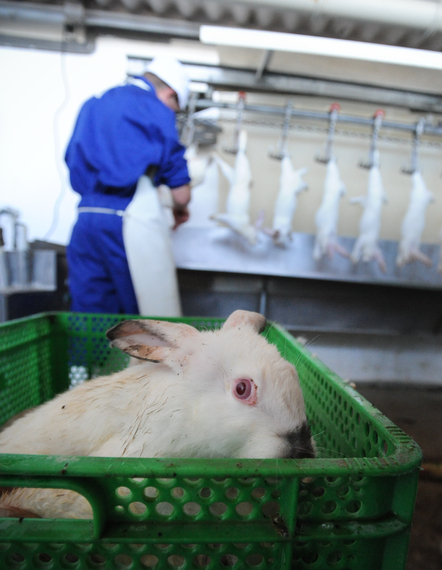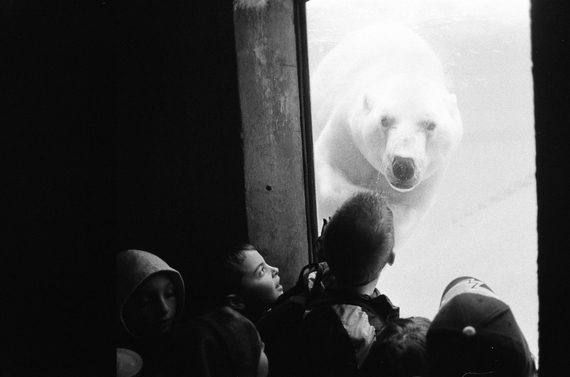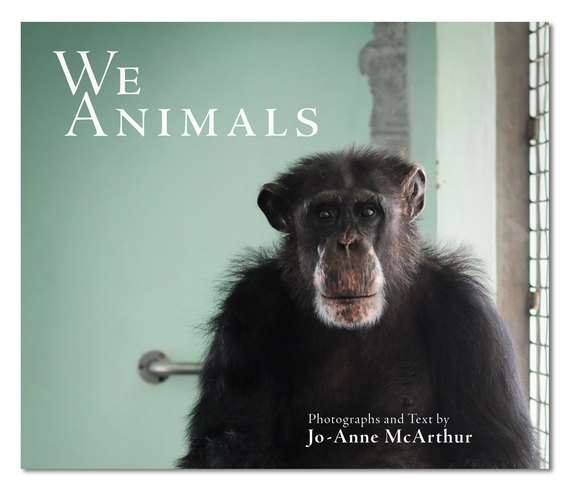Jo-Anne McArthur's We Animals is the most gorgeous book I have experienced in many years.
It is also an invaluable gift to the animal protection community.
A key topic of conversation among those of us who want to encourage a broader societal compassion for animals is how we break through our culture's cacophony of pop culture, politics, technology, and so much more? How do we secure, even among people who care about the world around them, a moment for animals?
We Animals should do the trick. It is a book of breathtakingly gorgeous photos and incisive accompanying prose, a perfect coffee table book -- a perfect gift for anyone, regardless of their current animal sympathies.
I cannot capture the breadth of We Animals in a short review, so I will briefly mention two motifs that stood out for me as I lingered over the powerful images: First, I was impressed by McArthur's focus on individuals. Whether a roped calf at the Calgary Stampede, a rabbit awaiting slaughter, an orca in a tank, or a pig on the back of a transport truck, McArthur wants us to see the individuals; through her lens, we look into their eyes.
We meet them.
photo credit: JMcArthur/WeAnimals
Second, I was deeply moved by the many images of children interacting with animals. On the one hand are children lost in wonder at the beauty of a greyhound or polar bear; innocence meets innocence. And yet the power dynamic leaps off the page.
photo credit: JMcArthur/WeAnimals
Equally engrossing are the young boy in training to be a matador because he loves bulls and the young girl with her mother or perhaps her grandmother, offering a puppy to a potential buyer; "look at the meat on him," the little girl is motioning, making her pitch to sell this dog for meat.
Jane Goodall calls We Animals "powerfully disturbing." And while Goodall is certainly correct, all is not disturbance.
McArthur also offers hope in the form of a chapter titled "Mercy". Here, she focuses her lens on human beings who are pulling animals out of horrid situations and providing succor, on campaigners who are fighting for an end to the cruelties of sea mammal slaughter and fox hunting, and on animals living happily with humans in sanctuaries.
It is a vision of where she wants the world to go that, to quote Joaquin Phoenix's blurb about McArthur's book, "celebrates tenderness, compassion and the joy of being alive for human and nonhuman alike."
With her first book, Jo-Anne McArthur captures the degree to which human relationships with other animals are convoluted and, in many cases, almost unfathomably unhealthy and wrong; but she also captures the hope inherent in people fighting to transform the world for the better, the belief and certainty that concerted action can change how the world understands and lives with our fellow creatures on this planet.
We Animals offers haunting sadness, but it also offers intense hope.
photo credit: JMcArthur/WeAnimals/Lantern Books (explore We Animals)



